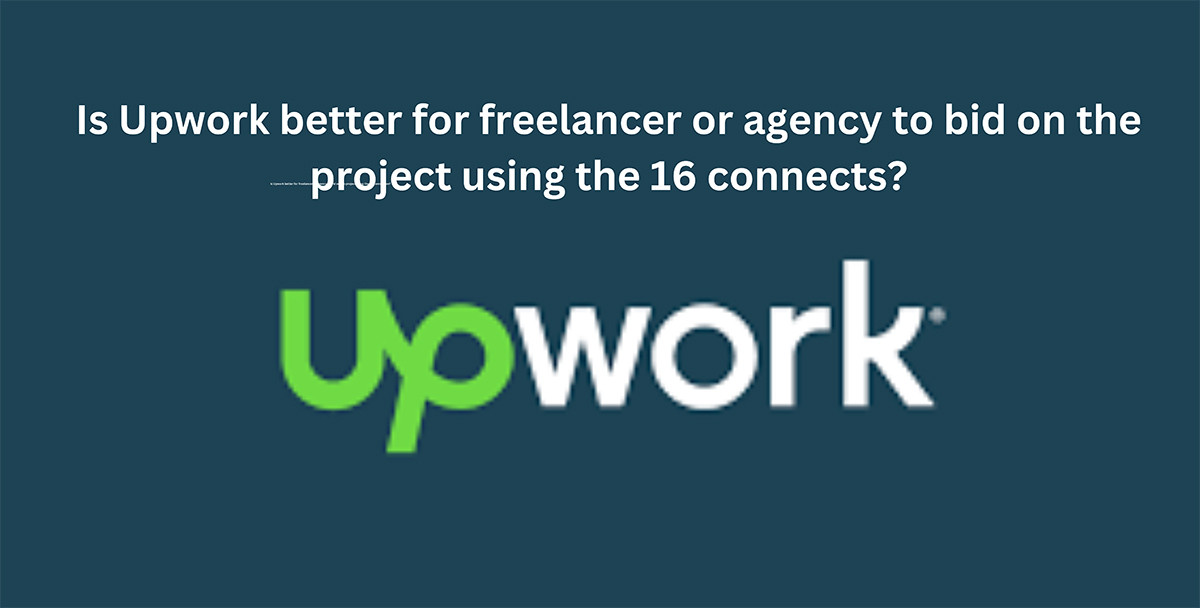
Upwork, a thriving hub for freelancers and clients to connect and collaborate, recently implemented changes to its fee structure, causing quite a stir in the freelance community. The alteration at the heart of this discussion is the substantial increase in connection fees, which has left many in the freelance world pondering the pros and cons for both individual freelancers and agencies.
The Upwork Connection Fee Increase: A Deep Dive
Upwork now charges freelancers for “connects” to submit proposals for projects, and the cost of these connects can add up, especially for those eager to seize multiple opportunities. The new pricing is as follows: 1 connect costs $0.15 USD. As a result, for a project that requires 16 connects, you’re looking at an expense of $2.4 USD per proposal.
A Costly Proposition for Freelancers
To illustrate the financial implications, let’s consider a $10 fixed-price project. If it demands 16 connections for bidding, you would need to spend $2.4 USD for a single proposal. Given that such small projects often attract 10 to 20 bids from freelancers worldwide, you can imagine the substantial revenue Upwork generates.
For instance, if 20 bids come in for a $10 project, Upwork earns a hefty $48 USD from connection fees alone. Astonishingly, this profit accrues to Upwork even if the project poster hasn’t hired anyone yet.
Moreover, when a client does hire a freelancer for the project, Upwork imposes a 10% service fee on the freelancer and an additional charge for the client, which can be as high as 20% if it’s their first project on the platform. In the end, Upwork’s total earnings from a $10 project can reach $51 USD, and this doesn’t include any payment to the freelancer for their work.
The Impact on Freelancers:
For freelancers, especially newcomers and those who aren’t top-rated, these increased connection costs pose a significant challenge. The $3.4 user acquisition cost for a $10 project can be a substantial hurdle for those just starting their freelance careers. These changes make it imperative for freelancers to be highly selective when bidding on projects, focusing on those with a higher likelihood of success.
The Perspective for Agencies:
Agencies, especially established ones with higher budgets, may be better equipped to absorb the increased connection costs. They can factor in the cost of connects as part of their operational expenses.
The Silver Lining in Increased Connect Costs:
While the increased connection fees present hurdles for newcomers, there are potential benefits to consider:
Exploring Alternative Avenues:
With the changes in Upwork’s fee structure, many freelancers and agencies are exploring alternative client acquisition strategies. Some are moving away from platforms like Upwork and establishing their presence outside of these platforms, attracting clients directly. This shift challenges Upwork to consider adjustments to its client posting rules to curb spam and time-wasting job postings.
Conclusion: The Freelancer or Agency Conundrum
In the face of increased connection fees, success on Upwork hinges on individual circumstances and strategies. While established freelancers and agencies may continue to thrive, newcomers and smaller players need to be strategic and may explore other avenues for client acquisition. It’s evident that Upwork’s evolving landscape requires adaptation and careful consideration of cost and strategy for all its users.
Now many of the agency or freelancers try to find the client directly. They not relay on the Upwork due to high competition and more money wasted to get the client. So now many freelancers or agency provides the direct services to the client. So due to that, good freelancers and agency not available on upwork which are ready to work on affordable price.
Many of the client direct find the agency on google and other platform and hire developers.